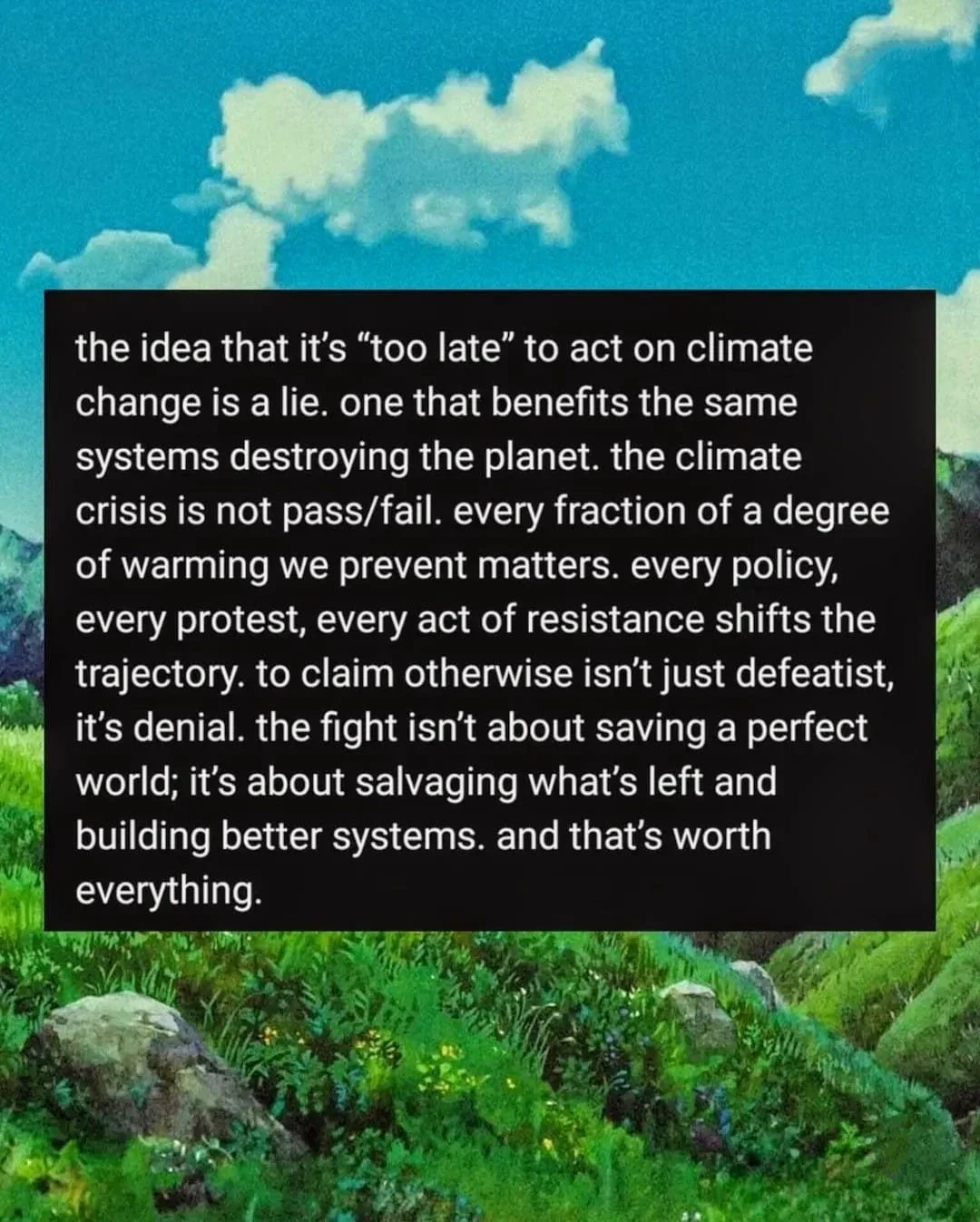Why are we so bad at addressing climate change?
By Madhumitha Srinivasan
Human beings have definitively known about climate change for over 60 years now. Since at least the late 20th century, the science has been clear: greenhouse gas emissions are warming the planet, and this has potentially catastrophic consequences. “Nearly everything we understand about global warming was understood in 1979,” Nathaniel Rich writes in his 2019 book Losing Earth. There have been no major scientific breakthroughs in the disciplines of climate physics or atmospheric sciences since the early 1980s.
And yet, despite our immense scientific, technological, and institutional growth and capabilities in the last few decades, we’ve spectacularly failed at protecting ourselves. We are close to breaching the 1.5°C warming thresholds set at the Paris Agreement in 2015, by the end of this decade[1].
From Fringe to the Edges of Acceptability in the Overton Window
The history of climate inaction can be better understood by looking at the shifting social norms and narratives rather than the emission reductions or global warming targets. The Overton Window describes the range of policy interventions considered politically viable at any given time. For a long time, climate change lay far outside that window, seen as either a fringe concern of environmentalists or a distant scientific problem for future generations to care about. Projections of early climate models did not seem immediate or tangible enough for the society to care enough about the impacts. To many, the concept of climate change and the potential impacts felt abstract. The air then was still breathable, water was drinkable, and extreme weather was rare. Hence, fossil fuels continued to power economic growth, and policies on climate change were seen as a costly diversion from development. Lobbying by industries and climate denialism spread through active disinformation campaigns kept the public detached, and the governments complacent.
But as climate impacts became more visible over the years through extreme weather events like floods, heat waves, and water shortages, public attention on environmental issues began to shift. People started paying attention, but often to fragmented symptoms of the problem, such as pollution, deforestation, rising urban heat, or water crises. The full systemic nature of climate change, which is interconnected with energy, food, health, livelihoods, and justice, remained barely recognized. While climate scientists and social scientists were already warning about climate tipping points and the need for concerted efforts on climate action, the oil and gas trade associations and lobbying groups continued to obstruct climate policies[2]. For instance, the concept of ‘carbon footprint’ was popularised by the oil and gas company BP in early-2000s[3]. BP even hired an advertising agency to repackage the ‘ecological footprint’ (which was a term coined by an ecologist) into an individual’s carbon footprint. They also launched the first carbon footprint calculator online. BP had successfully shifted the narrative and responsibility away from big corporations towards individual consumers.
Politically accepted policy positions
Around the 2010s, climate change moved from outside the window into the edges of it. Climate science became sharper with the projections and better at communicating with the masses. At the same time, powerful global climate movements emerged. For instance, the Fridays for Future campaign led by Greta Thunberg inspired millions of youth and students worldwide, forcing politicians to look at climate change not as a future threat, but a present crisis. Climate activism through non-violent civil disobedience by Extinction Rebellion (XR) created the political space needed for governments to engage in discourse on climate emergencies and climate action. While Extinction Rebellion’s position at the Overton Window might be at the far extreme, their radical methods, such as mass arrest tactics, blockades, or disruptions to public events, have created awareness amongst those who are otherwise outside the whole conversation. They made climate inaction hard to ignore.
In the past decade, climate change was forced into the popular narrative by such efforts and activism. These movements did not represent centrist policy, but they expanded the boundaries of what people were willing to talk about.
But many of the most essential climate policies still remain outside political feasibility. Ending fossil fuel subsidies, taxing carbon emissions, or shifting to post-growth economic models is still unthinkable. Climate and environmental protest is being criminalised and repressed in some parts of the world[4]. At the same time, corporations and in some cases, even governments, do greenwashing by claiming progress while continuing business as usual. This further distorts the public’s perception of how much effort is being taken towards climate change.
Collective action = No action
Climate change is a classic collective action problem. It adversely impacts everyone irrespective of who causes it, and mitigating climate change benefits everyone regardless of who abates and pays the costs of emissions reduction. In this free rider situation, every country waited for others to act first. The cost of this free rider problem has been timely climate action.
We can understand the lack of international cooperation on climate action through Olson’s collective action theory, which says "Unless there is coercion or special incentives, rational, self-interested actors will not act collectively—even if it's in their common interest."
Olson’s central argument is that concentrated minor interests will be overrepresented and diffuse majority interests. Climate change involves too many actors with many conflicting interests, making coordination complex. Even among countries that want climate action, there's no agreement on how much effort each should contribute or how to do so without threatening economic growth. There was no consensus on the ideal methods to act. On the other hand, those opposing actions are fewer in number, and far better organised. Hence, they are a lot more capable of stalling progress.
The Most Affected Are the Least Organised
The inequity in climate change impacts also worsens the pace of action. Climate change is caused by global emissions that are predominantly from richer industrialised countries, but its impacts are diffused unevenly, focusing predominantly on developing and underdeveloped countries. The concept of ‘climate justice’ gained prominence around the late 1990s. Activists from the Global South and marginalised communities have been pivotal in shaping climate justice as a bridge between socio-economic justice and environmental concerns. Developing countries, hence, argue that rich countries caused the issue, and therefore must lead (which is the principle of ‘common but differentiated responsibilities’). This meant that developed countries take the lead in emissions reduction, but they failed to take meaningful leadership.
Unlike in other environmental treaties, such as the Montreal Protocol (which aimed to protect the Earth's ozone layer), there was no clarity on either the financing or the technological alternatives required for climate action. Hence, most developed countries, such as the U.S., Australia, and some oil-exporting countries, either actively resisted or undermined climate agreements. There was an absence of a dominant power who was willing to enforce or incentivize cooperation amongst all. The U.S., which was most apt to play this role, refused to do so and stood on the opposing side.
The political and economic interests of the countries were opposed to climate action. Cutting emissions today imposes short-term economic costs for the governments of today, while the benefits are long-term and uncertain. This mismatch discourages governments from acting, as politicians think in election cycles. These inherent issues in international cooperation, along with industry lobbying, only further delayed any progress.
We’ve known what to do. We just haven’t done it.
The tragedy is not that we lack solutions—we have them. We have been studying renewable energy, sustainable agriculture, climate-resilient infrastructure, circular economies, and many other solutions for decades. We know how to design better cities, regulate emissions, and fund transitions. Countless studies have shown what works, how to do it, and when to do it. But this scientific consensus has not translated into political consensus.
The bottleneck is no longer knowledge. It’s political will, public pressure, and entrenched interests.
If we don’t shift the window on time, Nature will do
If we do not shift our windows of politically viable solutions now by shifting our expectations, behaviours, and norms, Nature will force us to shift it when it is too late to protect against it. It is far better for society to preemptively shift its priorities rather than wait for disasters to compel change.
Nature is already sending us soft signals through its changing weather patterns, or the increase in frequency of extreme heat. But are we listening to these early warnings?
Madhumitha Srinivasan is a participant of the 41st cohort of the Graduate Certificate in Public Policy programme at the Takshashila Institution. This blog was originally published on her Substack, TooManyTabsOpen. Views are personal and do not represent Takshashila’s policy recommendations.



